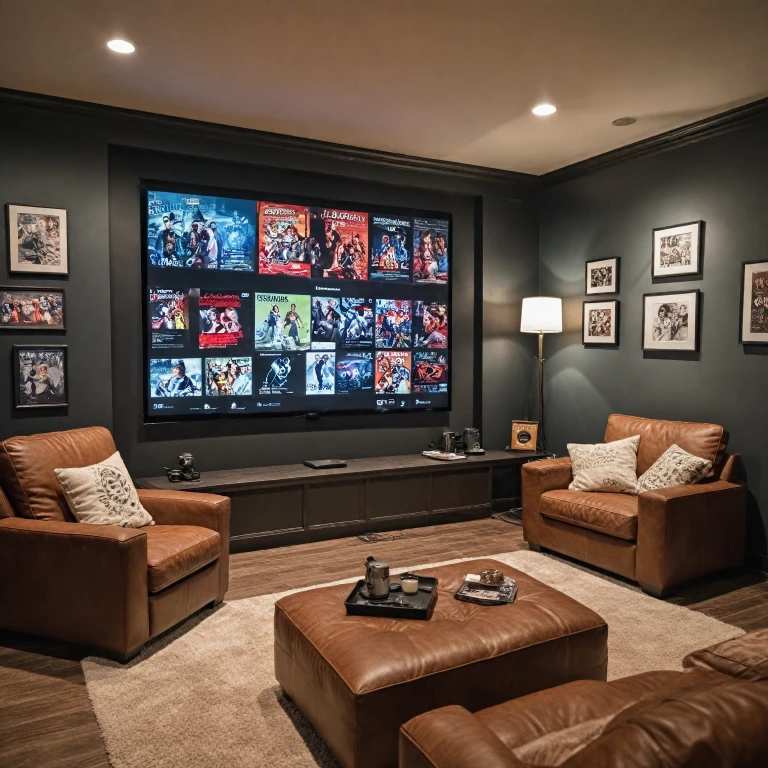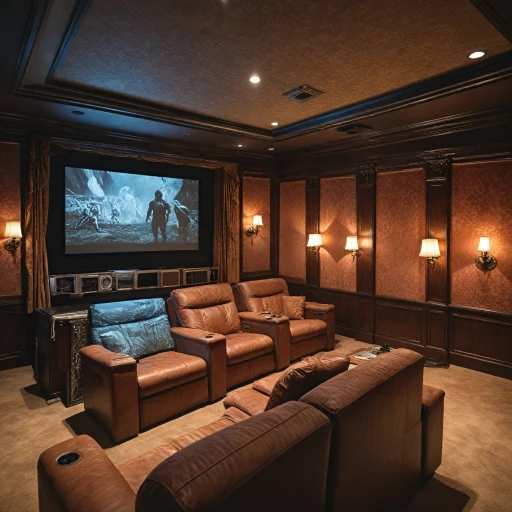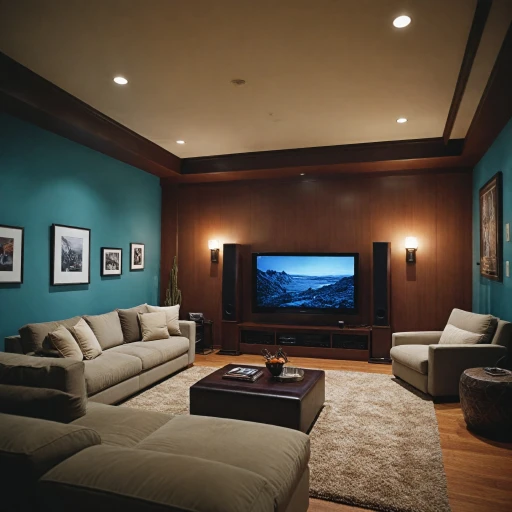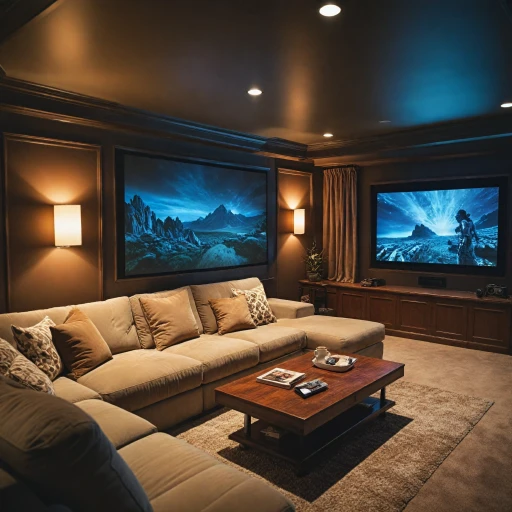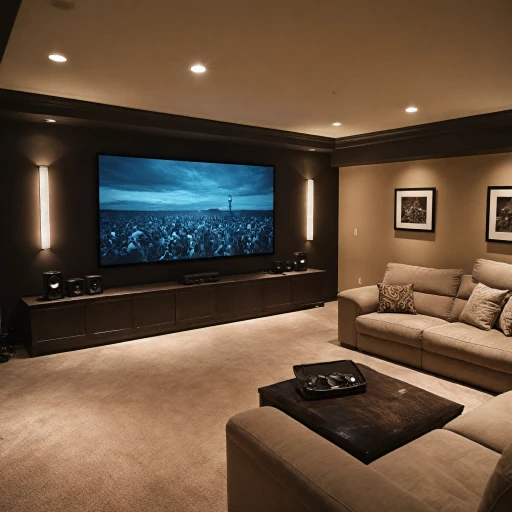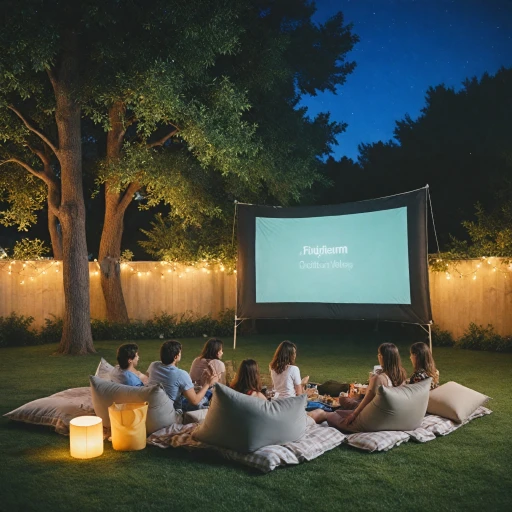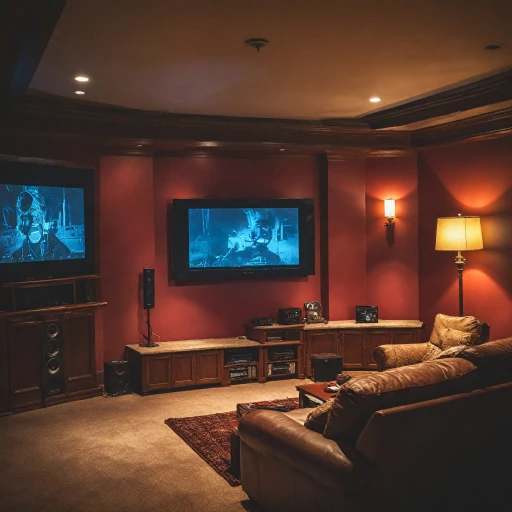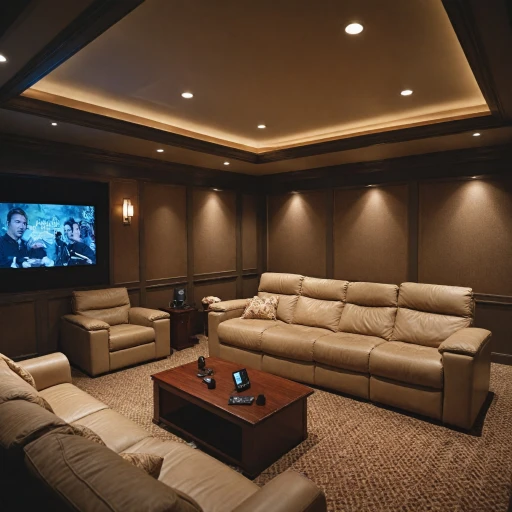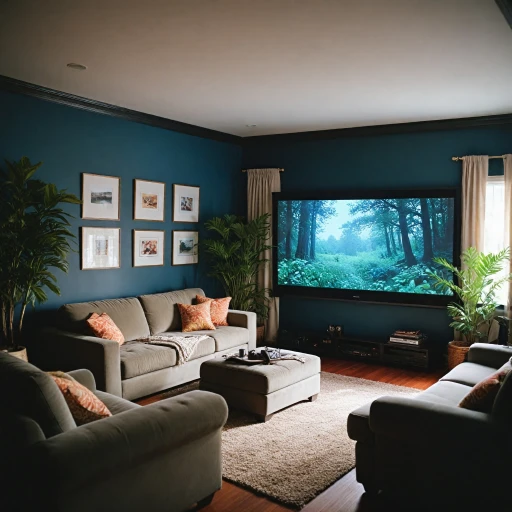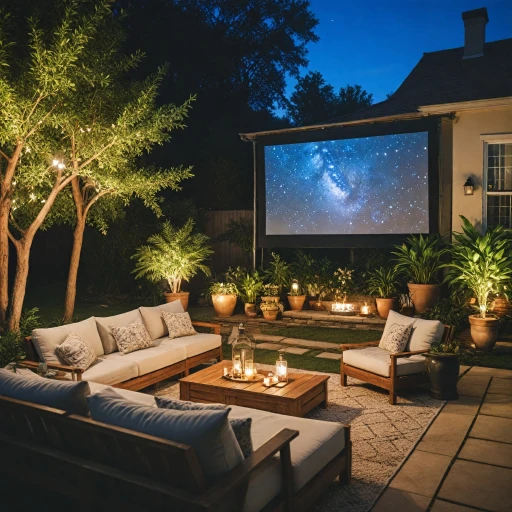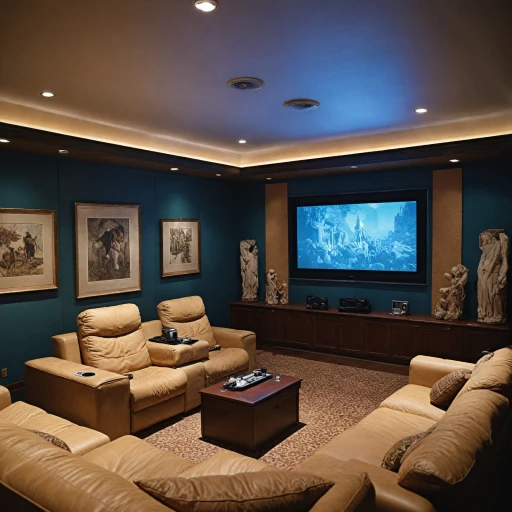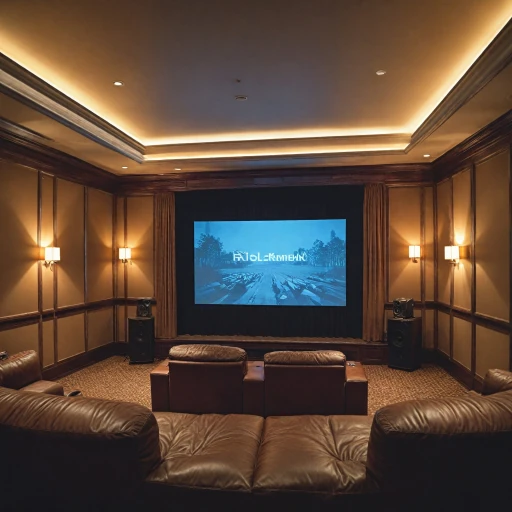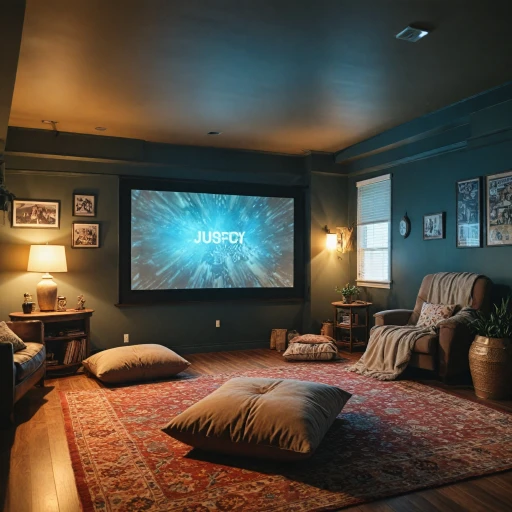
Understanding Screen Types
Decoding the Various Types of Screens
When setting up your home theater, selecting the right screen is essential to maximize your projector's potential and create the best viewing experience. A variety of projector screens are available, each tailored to specific needs. Firstly, let's look at fixed frame screens, perfect for a dedicated home theater space. These screens provide a stable, tightly stretched surface that guarantees an image free from the distortions caused by wrinkles or bends. Elite Screens offers splendid options in this category with high gain for brighter images even in ambient light. For those who crave versatility, manual and floor-rising screens might be preferable. These are easily retractable, suitable for spaces that require dynamic use. They're often more budget-friendly than their fixed counterparts and offer flexibility if your projector's setup varies. Another advanced option is the light rejecting screen, designed to combat ambient light. This type ensures quality image projection regardless of the external light conditions, proving invaluable if your room isn't equipped with blackout curtains. For enthusiasts seeking a compact solution, ultra short throw projector screens are an option. These screens accommodate projectors that image from a close distance, ideal for small rooms. Silver Ticket and EPV Screens have promising reviews in this space. Don't forget to explore outdoor projection screens if your home theater extends to the garden or patio. Understanding your space and projection needs will guide you to the ideal screen that elevates your viewing experience.Screen Material Matters
Importance of Selecting the Right Projector Screen Material
The choice of screen material is crucial in shaping the quality and clarity of the projected image. Different materials impact the light reflection, color accuracy, and overall viewing experience in your home theater. When it comes to elite screen options, selecting the best material for your needs will have a significant effect on the cinematic feel.
One of the primary considerations is gain, which measures how much light the screen reflects. A higher gain value means more light is reflected, making the image brighter. Settings with low ambient light will benefit from a material with lower gain, providing deeper blacks and more vibrant colors, especially when using short throw or ultra short throw projectors.
An ideal screen material will complement your specific projector's throw distance and performance. For instance, a light rejecting screen material can minimize the impact of ambient light, making it perfect for rooms where light control is a challenge. For a reliable and illustrative guide on choosing the best window projector screen in modest lighting conditions, visit our detailed window projector screen post.
Materials also differ based on their viewing angle, which determines the clarity and brightness of the image from off-center positions. If your room setup has wide seating, it's vital to prioritize a screen material providing a wide viewing angle.
The selection of a fixed frame or a manual roll-down screen further influences your options. Fixed frame screens, such as those offered by Silver Ticket or EPV Screens, often provide taut material ensuring a flat surface which benefits the projection's image quality greatly.
Size and Aspect Ratio Considerations
Optimizing Your Viewing Experience: Key Factors to Consider
When selecting a projection screen for your home theater, it's essential to strike a balance between size and aspect ratio, as these factors significantly affect your overall viewing experience. With today's diverse range of projectors—including short throw and ultra short throw models—it's crucial to consider the type of projector you'll be using. This will help determine what size screen will best fit your theater room and enhance your viewing pleasure. First, the size of your projection screen is pivotal. Larger rooms often accommodate bigger screens, enhancing the immersive feeling of a true theater experience. However, consider the viewing distance; sitting too close to an oversized screen may lead to discomfort. Generally, the recommended viewing distance is approximately 1.5 to 2.5 times the diagonal size of the screen. For example, a 100-inch screen would be best viewed at a distance of about 12 to 16 feet. Next, aspect ratio is a significant consideration. The most common ratios are 16:9 and 2.35:1. While 16:9 is excellent for general use and television content, a 2.35:1 aspect ratio, often found in more elite screens, provides a wider field that's perfect for cinematic films. Adjusting to the right aspect ratio ensures you make the most of your projector’s capabilities and enjoy the best image quality. Furthermore, consider the "gain" of the screen. This relates to the reflection of light from the projector. A higher gain screen reflects more light and is better suited for rooms with ambient light challenges, whereas a lower gain screen might offer a broader viewing angle, helping multiple viewers enjoy the perfect picture without compromise. Ultimately, whether you’re using fixed frame screens such as the elite screens Sable frame, or choosing from budget-friendly options like Silver Ticket and EPV screens, finding the right size and aspect ratio that suits your room’s layout and your projector's throw will greatly enhance your home theater experience. For a deeper dive into understanding the integration of different infrastructure around projectors, you might want to explore more about the chief offset fixed ceiling plate for home theater projectors to ensure a flawless setup.Ambient Light and Screen Color
Dealing with Ambient Light
Choosing the right screen for your home theater involves considering how ambient light affects your viewing experience. The presence of ambient light can significantly impact the quality of your image projection, diminishing contrast and color accuracy. Given this, selecting the appropriate projector screen becomes even more crucial.
When evaluating screens, it's essential to understand that certain types, like light rejecting screens, are crafted to combat light interference. These screens work by minimizing glare and reflection from external sources, ensuring your movie night isn’t spoiled by a pesky lamp or sunlight seeping through your windows. Brands like Elite Screens and EPV Screens offer options tailored for environments with considerable ambient light, helping to maintain a high-quality viewing experience.
The screen color and materials will also play a pivotal role. A black screen, though not traditional, can absorb more light, which can be extremely effective in rooms with ambient light issues. On the other hand, screens with a higher gain will reflect more light back to the audience, enhancing the brightness of the projected image even in well-lit rooms.
Moreover, the viewing angle is an essential factor to contemplate. Screens with narrow viewing angles tend to perform better in ambient light because they direct more of the projected light towards the center. Keep in mind that specialty screens, such as the Silver Ticket and Sable Frame fixed frame options, could provide additional light control with higher gain materials.
Installation and Maintenance Tips
Beyond Placement: Fine-Tuning Your Home Theater Setup
When it comes to enhancing your home theater experience, projector screens play a crucial role. Setting up your chosen screen material might seem straightforward, but the positioning and care are critical for maximizing the picture quality. Here are some key considerations:- Installation Position: Depending on your throw projectors—be they short throw or ultra-short throw—the distance and angle from the projection screen can significantly affect image sharpness and gain. Fixed frame screens provide a sleek, stable option, while screens manual or floor rising systems offer flexibility if space or permanent mounting is a concern.
- Ambient Light Rejection: Light-rejecting materials are invaluable, especially if your room has considerable ambient light. A well-positioned viewing angle can diminish unwanted reflections and enhance the perceived brightness of the elite and silver ticket screens, creating a more immersive image.
- Room and Wall Color: Believe it or not, the room's color and the placement of black-out shades can enhance image quality by controlling the ambient light around the screen.
- Regular Maintenance: It's vital to keep the screen material clean and free of dust to maintain the best image quality. Regularly inspect for wear, tears, or any discoloration which might impact the viewing experience.
